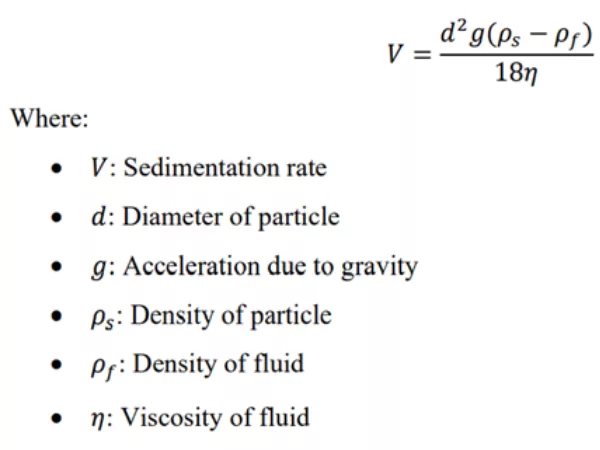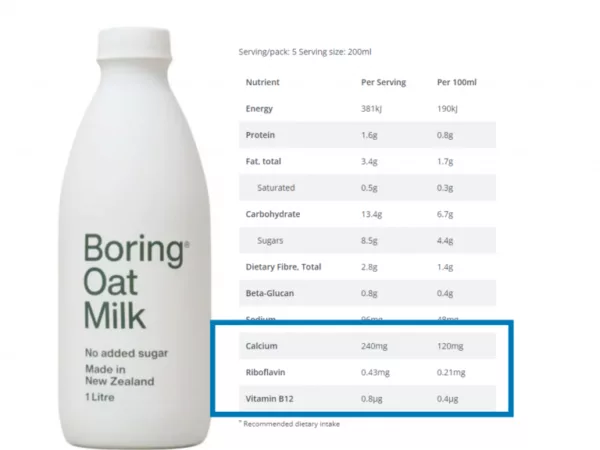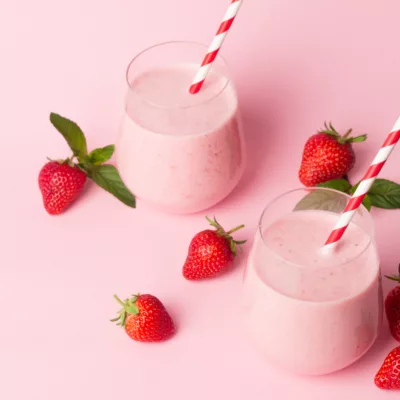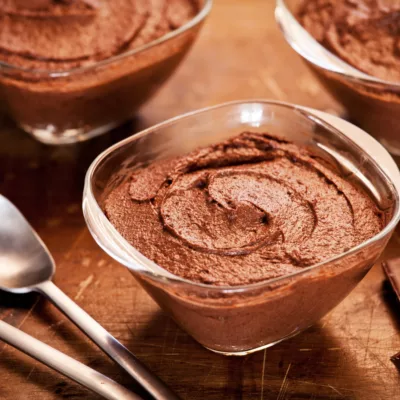Two years ago, if you asked for oat milk in your flat white, you’d probably be met with a blank stare and told to pick either soy or almond. Fast forward to today, and it’s become the Gucci of dairy alternatives, even increasing the popularity of the alternatives category as a whole.
The creamy oat deliciousness ticks all the sustainability, ethics, flavour and functionality boxes. However, as consumers become increasingly aware of what is in their food, we want to make sure they’re not missing out on any of their micronutrients.
Technical Tips for Choosing the Right Ingredients in Application
We typically want to add ingredients for their nutritional benefit and label claim when fortifying a product. But do not want them to impact the taste, texture or appearance. In terms of adding vitamins and minerals to oat milk, this remains true. To achieve this, there are four key features to consider when picking a specific ingredient.
Mineral content
The most significant factor for this is the actual compound chosen and its chemical composition. For example, calcium carbonate contains 40% calcium by weight, whereas dicalcium phosphate contains 30%. This means the amount of dicalcium phosphate required is higher to achieve the same dosage of calcium in the final product.
Solubility
Cloudy beverages such as milk alternatives and dairy systems use insoluble salts to stop interaction between other components in the beverage. Typically, the solubility of the mineral is given at ambient temperature and neutral pH unless otherwise specified. A change in either of these conditions may result in higher dissociation of the salt.
For example, tricalcium phosphate (TCP) has a high mineral content and low cold solubility (0.02%), but α-TCP decomposes to hydroxyapatite in hot water (80-100°C). Standard oat milk is around neutral pH, and heat processing is a short time, so the solubility of the mineral remains intact. However, if adding to a hot beverage or developing a high acid, shelf-stable beverage such as a fruit or coffee flavour, this will increase the solubility of the tricalcium phosphate, releasing more free mineral ions in the system and allowing adverse interactions.
Taste
Some vitamins and minerals can impart a strong flavour on the final product, which is undesirable to the consumer. Therefore, it is essential to look for ingredients with a neutral or mild taste in the application.
Particle size
When insoluble particles are added to a beverage they must be as small as possible or else they will sediment rather than stay suspended. According to Stokes Law below, particle size (d) is the most significant factor in determining sedimentation rate. The viscosity of the fluid phase also has an impact but this is primarily determined by the desired organoleptic properties. A small particle size also helps to reduce any gritty mouthfeel.


Food Standards Australia New Zealand (FSANZ)
Vitamins and minerals added to an oat beverage sold within Australia or New Zealand must comply with the FSANZ code. There are extensive regulations on permitted forms, maximum permitted amounts for the specific food type, maximum claimable amounts and percentage RDI that must be met for making different levels of claims.
For example, the maximum permitted amount of magnesium per 200mL of oat milk is 22mg. However, no claims are permitted for magnesium in oat milk (or other beverages containing no less than 0.3% m/m protein derived from cereals, nuts, seeds or a combination of those ingredients). So, this means you can add magnesium and list it in the nutrition information, but you can’t make a claim about it on the pack.
Some Fortification Examples and Tips
Calcium
Calcium is the most abundant mineral in the human body, vital for healthy bones and teeth. Unfortunately, as we get older, the body’s ability to absorb calcium from the diet decreases. Therefore, when limiting good sources of calcium such as cow’s milk, it is essential to ensure we are getting supplemented from other products.
- Calcium carbonate and dicalcium phosphate are both permitted forms for calcium in oat milk
- They both have low solubilities at neutral pH and a neutral flavour
- The maximum claimable amount of calcium per 200mL is 240mg (30% RDI)
Vitamin D
There is a synergistic effect of vitamin D with calcium, assisting its absorption in the body. It also facilitates the immune system and muscle function. Like humans, mushrooms can also synthesise vitamin D when exposed to sunlight, making it a good, non-animal food source. Hawkins Watts offers a mushroom vitamin D2 powder with no taste and a reasonable cost in use.
- Vitamin D2 and D3 are permitted forms in oat milk
- The maximum claimable amount is 1.0µg (10% RDI) per 200mL of oat milk
- The maximum permitted amount per 200mL of oat milk is 1.6µg
Riboflavin
Also known as Vitamin B2, it helps convert food to energy, maintain proper eyesight, and act as an antioxidant.
- Riboflavin is a permitted form in oat milk with no maximum permitted level
- The maximum claimable amount is 0.43mg (25% RDI) per 200mL of oat milk
Zinc
Zinc is an essential trace mineral for body growth, tissue repair and resistance to disease. Zinc Oxide is an excellent option for this application. It is insoluble, contains approximately 80% Zn by weight and has a neutral flavour.
- The maximum permitted level is 0.8mg per 200mL of oat milk
- No claims are permitted for zinc in oat milk. However, it can still be listed in the nutritional information panel
Suspend the Insoluble Particles
Loading solid particles into an aqueous phase may require a hydrocolloid to ensure good dispersion throughout the shelf life. Hydrocolloids are polysaccharides and proteins that function as water control agents by increasing viscosity and/or forming gel networks. These networks can build around the solid particles and help keep them in suspension. Hawkins Watts can help to suggest a suitable ingredient with a dosage that will work best in your specific application.

How Can We Help?
With many aspects to consider for each application, our technical team is experienced in finding the right ingredients to suit your product. Hawkins Watts supplies a wide range of vitamins, high purity minerals, hydrocolloids and other stabiliser solutions. With access to a homogeniser and UHT in our technical labs, we take the guesswork out of knowing how an ingredient will perform in the final product.
Feel free to get in touch with us. We would love to have a chat!
New Zealand
Grace Van Tilborg – grace@hawkinswatts.com
Stuart Jones – stuart@hawkinswatts.com
Australia
Amanda Thomas – amanda@hawkinswatts.com.au




